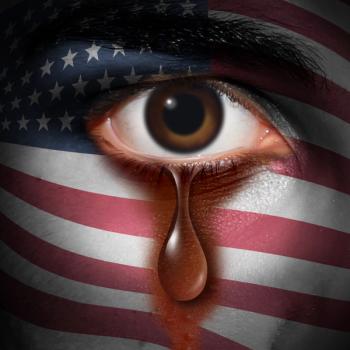
A Shaman and a Psychiatrist: A Supernatural Story?
Some serendipitous occurrences made me wonder (even as a rational psychiatrist) whether something spooky and supernatural had been transmitted to me by the shaman who conducted a "Mother Earth" ceremony. Here's what happened.
As a young psychiatrist, I was interested in the history of our relatively young profession. I was also interested in cross-cultural psychiatry. We had an anthropologist on our faculty and I was working in the multicultural, booming city of Houston. That interest, in turn, led me to shamans.
Shamans-those native healers in what some still call "primitive" traditional societies-are our forerunners. One has to be impressed by how much psychiatric healing they can provide using such techniques as trance, placebo, and native plants, all precursors of psychotherapies and psychopharmacology. One advantage shamans always seem to have had is that their treatment is associated with less stigma and that they enjoy an integrated role in their communities.
However, I had never met a real shaman until my wife and I recently went on a group tour to Peru and Ecuador. While there, our Smithsonian tour arranged for us to have a morning prayer service led by an indigenous shaman. This early morning service was devoted to "Mother Earth." As the shaman, through an interpreter, conveyed his concern for environmental pollution, he gathered cocoa leaves and other herbs, chanted, and played the flute. After the ceremony, the offering was packed up and burned like a sacrifice.
Cocoa leaves have been used for centuries in that mountainous part of the world for extra energy, and we used them to help reduce altitude sickness. From cocoa leaves came the ingredients to make cocaine, which connect to modern psychiatry. Freud famously used cocaine for a while, and the crop is now is a major source of revenue and substance abuse.
Some serendipitous occurrences that followed the Mother Earth ceremony made me wonder (even as a rational psychiatrist) whether something spooky and supernatural had been transmitted to me by the shaman. Here's what happened.
A couple of days later, as we were getting ready to leave Ecuador to go to the Galapagos Islands, I received an email from a reporter requesting a response from an "expert in eco-psychiatry." However, it seemed to be a ghost text because no text appeared under the heading! On the airplane, we opened our I-Pad, and lo and behold, the text popped up. I know there is an IT explanation for this, but still . . . The reporter was asking about a new study that suggested the development of solastalgia in an Appalachian community where the tops of local mountains are being cut off to mine coal.
Solastalgia, a term coined in Australia a few years back as a corollary of sorts to nostalgia, means the sadness of being in a beloved environment that is changing but which you can't leave.
I was briefly overcome. Here we were traveling to an environment where every attempt was being made to keep it as pristine as possible. But back in the USA, coal mining was despoiling the environment and producing a double whammy of immediate solastalgia and the delayed destructive effects of carbon from the coal. So, of course, I made every effort to reply, finding WiFi for only a half hour after we landed. The reporter had required a deadline response by the next day.
Home shortly thereafter, we waited to receive pictures taken from others in our group. On the day before Halloween, I received one from our tour leader that I didn't know had been taken. It was of me and the shaman, side by side. Our tour leader happened to be a conservationist. When I told him about the reporter's questions and solastalgia, he was quite intrigued, and wondered if the concept could be extended to conservation efforts, not only of birds and animals, but also historical buildings and neighborhoods. I think this insight may lead to new connections of concern for climate change.
There may be a deep emotional connection we have to beloved aspects of our environment which can be further mined.
Quite a treat for Halloween, wouldn't you say? Or, am I being tricked? Was our shaman a Carlos Casteneda?
Newsletter
Receive trusted psychiatric news, expert analysis, and clinical insights — subscribe today to support your practice and your patients.




